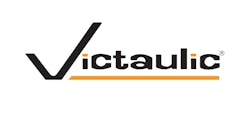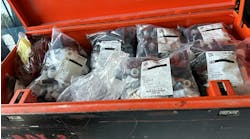Latest from Piping
Sponsored
Lead-free products must meet requirements
For decades, lead has been used around the world as an essential element in the production of brass and bronze plumbing fittings and fixtures. In 1986, the U.S. Environmental Protection Agency adopted and mandated the Safe Drinking Water Act (SDWA) under which any drinking water in contact with plumbing products such as pipe, solders and copper alloys (brass and bronze) used in fittings, faucets and lavatory fixtures with greater than 8% lead were no longer allowed. Products containing less than 8% were defined by the SDWA as “lead free.” Under that criterion, all Viega drinking water contact products are lead free.
Shortly after the enactment of the SDWA, NSF/ANSI Standard 61 — Drinking Water System Components Health Effects — was commissioned by the U.S. EPA. NSF 61 specifically limits, among other chemicals and substances, the amount of lead that can become dissolved into drinking water as a result of water contact with metallic plumbing materials. In order to be a listed potable water product in the U.S., all potable water contact materials must meet the NSF 61 requirements.
The ultimate goal of the U.S. EPA is to bring the level of allowable lead extraction from plumbing products to effectively “zero.” In response to the EPA goal and other environmental influencing factors, NSF 61 was revised in 2008 to reduce the amount of soluble lead as tested to approximately one-third of today's levels with an effective date of July 2012.
Since the inception of NSF 61 in the 1980s, copper alloy plumbing products intended for drinking water distribution, including all Viega brass and bronze potable water products, have been surface deleaded to minimize the amount of lead which might dissolve into the drinking water. This has been a very effective practice used by the entire plumbing industry to safely remove surface lead after the machining process.
Recently, the states of California and Vermont passed separate legislation into law aimed at eliminating not just lead content from general consumer products, but also from potable water plumbing products. These states will limit lead content for potable water conveying plumbing products to a weighted average of less than 0.25% effective Jan. 01, 2010.
As of July 21, 2009, neither California nor Vermont has yet to adopt and implement a standard testing methodology for measuring compliance to these new state laws, but it is anticipated that they will do just that in the near future. In order to support manufacturers who offer products complying with these requirements, NSF's joint committee on Standard 61 has written and adopted an annex to Standard 61 known as “Annex G” intended to provide manufacturers a means to certify product as meeting the prescriptive requirements of these new state laws.
Several new low-lead or zero-lead copper alloys have been developed by suppliers and introduced for the continued production of brass and bronze plumbing products. New low-lead and zero-lead copper alloys are widely known by their trade names such as Envirobrass, Federalloy and Eco Brass. Along with Viega's new Zero-Lead bronze, these alloys are all unique in that they contain no purposeful introduction of lead. These alloys all use small amounts of bismuth, bismuth-selenium or silicon in place of lead to allow the metals to be machined, forged or cast. While each of these replacement elements has unique pros and cons, it is Viega's opinion that silicon alloys are the best solution for meeting the performance demands into the foreseeable future. Generally speaking, most low-lead and zero-lead alloys will be more expensive and more costly to manufacture finished goods with than present day leaded alloys. These additional costs may reduce over time as market demand increases for these new alloys and manufacturers optimize their machining processes.
Viega has optimized its own zero-lead bronze alloy in addition to researching other commercially available alloys, and is prepared to meet the mandates for California and Vermont with zero-lead plumbing products. The Zero Lead alloys are resistant to stress corrosion, cracking and dezincification as demonstrated in laboratory and field testing.
Viega's new copper alloys will be fully compliant to the upcoming legislation. Not all new alloys entering the market will be truly zero lead, as some will contain a purposeful amount of lead of just less than 0.25% while others will introduce products that have a plating or coating applied to the wetted surface of the underlying lead containing alloy. Viega's new Zero Lead fitting products will be certified to NSF/ANSI Standard 61 Annex G as containing less than 0.1% lead.
Viega's solutions for lead-free potable water plumbing products will not only eliminate the need for lead in the product life cycle, but will also provide excellent product performance equal to or better than present day products.
Employed by Viega since 2001, Robert Gottermeier is responsible for expanding the organization's conceptual ideas into new products. Prior to joining Viega, Gottermeier held numerous management and engineering positions for a variety of mechanical companies.

